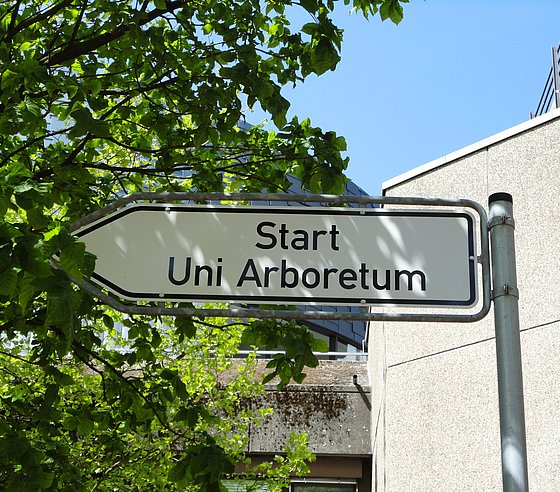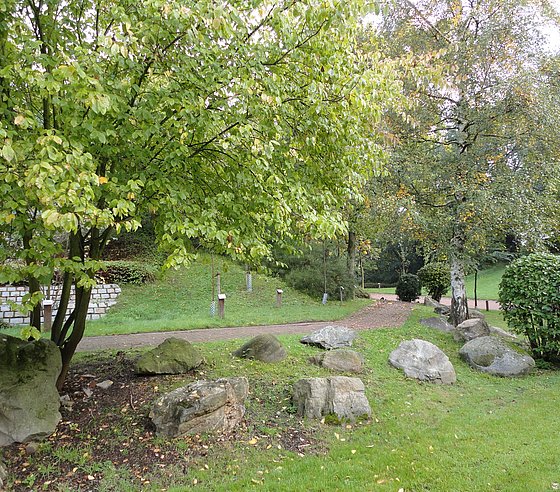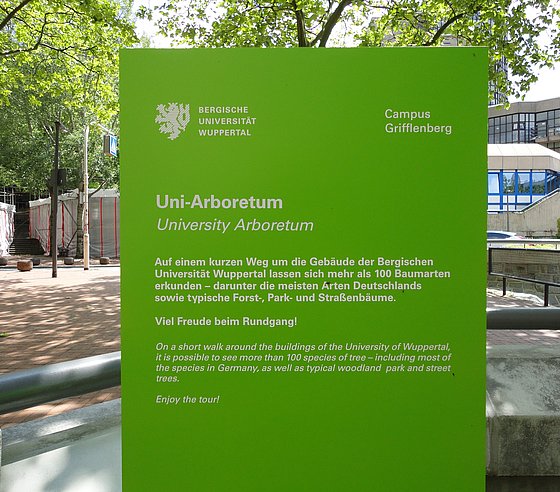


June - University Arboretum
It started with a 'fixed idea': the trees on the Grifflenberg campus. Numerous people contributed to making this idea a reality through their commitment.
After the campus was built 50 years ago, various tree species were planted in the outdoor area, meaning that 27 species were included at the beginning of the 'Uni-Arboretum' project. By the time it opened in 2012, more species had been added, bringing the total number of signposted trees around the university buildings to 42. Over the years, the arboretum has grown in size, and following several expansions, it now encompasses 102 species. The university arboretum is a prime example of how the old can be incorporated into the new to create something enhanced.
Making biodiversity tangible
The University of Wuppertal is known for its teacher training programmes, including biology. Part of the biology degree programme is the identification of plants and animals, and in this context the university arboretum is used for courses where students learn to identify woody plants. Of course, university staff or guests can also visit the university arboretum, which is open to the public, and learn about numerous woody plants using the accompanying brochure (pdf file of the brochure) and the signposting.
University arboretum as a genetic resource
To reduce the loss of biodiversity worldwide, the habitats of species must either be secured or replacement sites provided to preserve their genetic material. The university arboretum also grows two rare tree species to help conserve them.
University arboretum as a bee (insect) pasture
Many insects depend on flowering plants for food. This includes fruit trees such as apple, plum and cherry trees, as well as other species such as lime trees. These species of tree were initially lacking on the university grounds, but have been planted in recent years.
Trees dead due to heat and drought
Trees in urban areas must be able to withstand the urban climate, including occasional water shortages, extreme heat and air and soil pollutants. This stress is exacerbated by global warming, which leads to longer and hotter periods of drought in spring and summer. Consequently, some trees suffer damage, become susceptible to pests or die. In the university arboretum, for example, black and grey alders, which have higher water requirements, died in the dry and hot summers of 2018 and 2019. Other species that may be able to withstand the conditions caused by climate change for longer have been replanted in their place, such as the silver lime and the sweet chestnut.
University arboretum as a complex "eco-hotspot"
The university arboretum has many functions and combines several 'eco-hotspots', enriching our university through its diversity. However, it is also a barometer of how the weather and climate are changing. The adaptability of the various tree species is limited, so it is up to us to significantly reduce the emission of climate-damaging gases (primarily CO₂), reduce water consumption, and promote groundwater recharge, in order to avoid further worsening living conditions for plants, animals, and humans.
